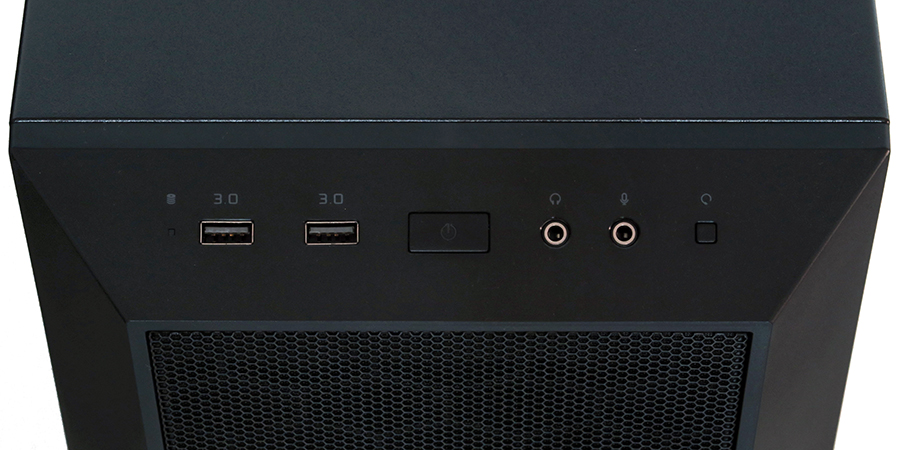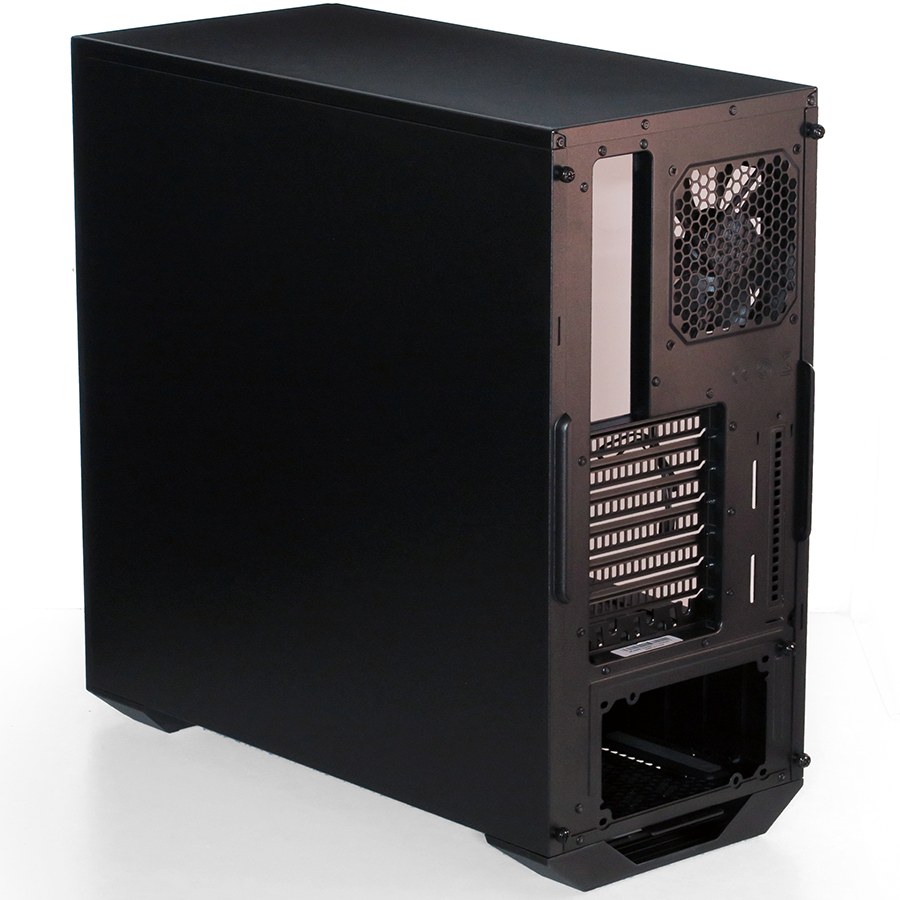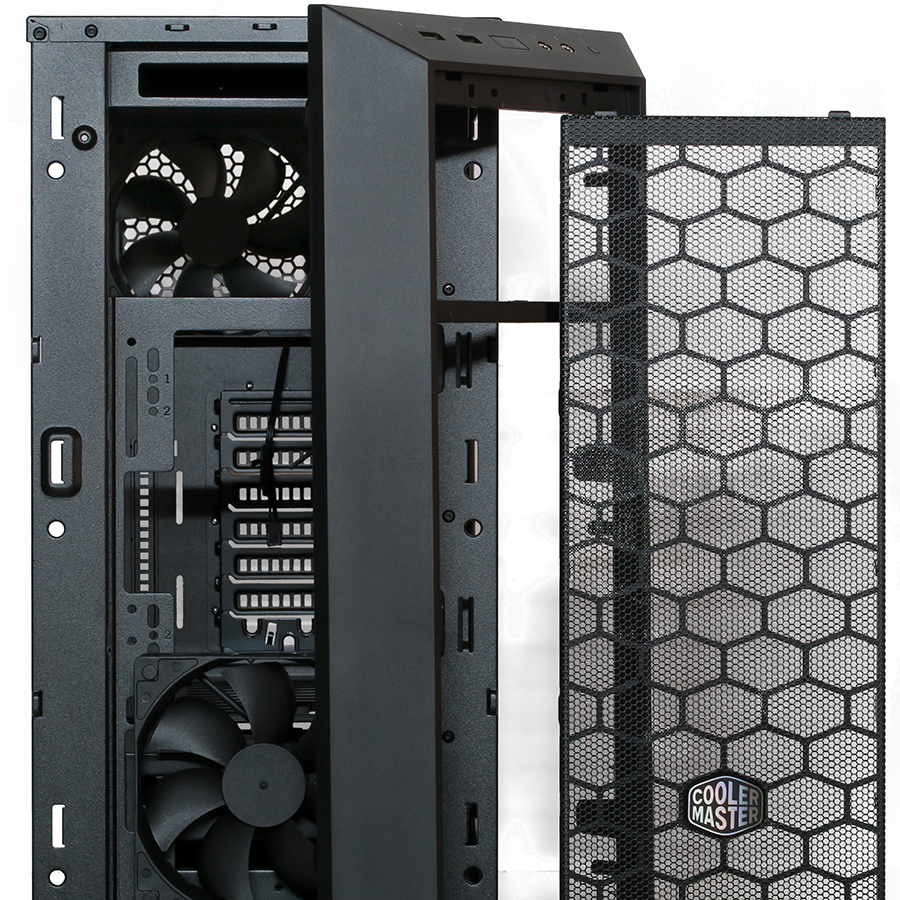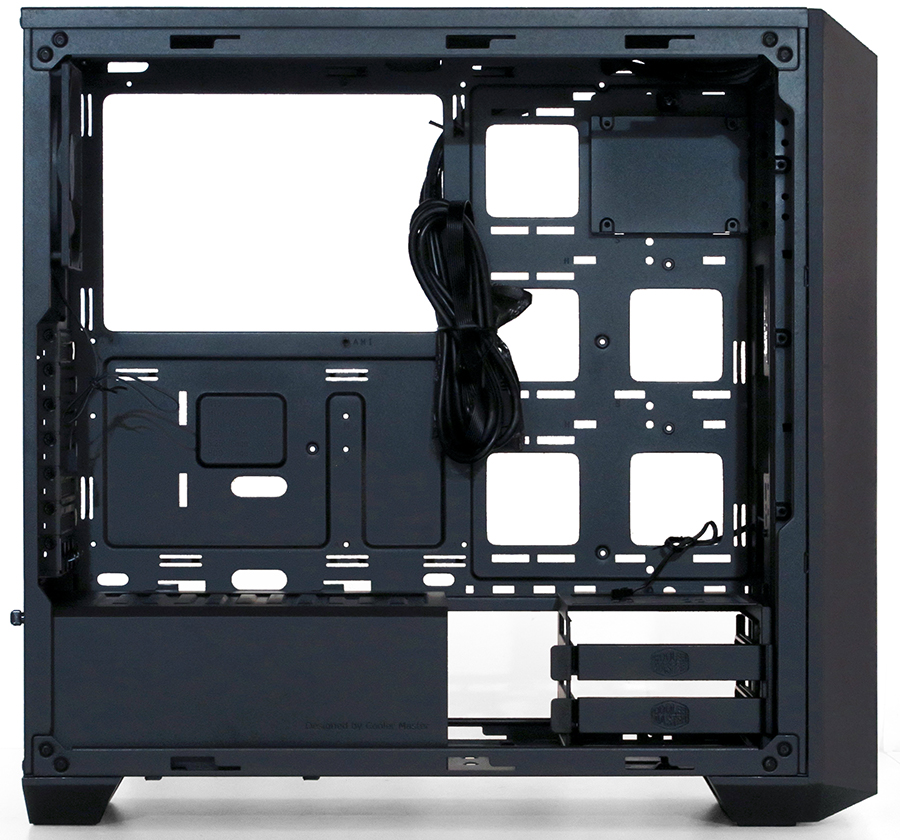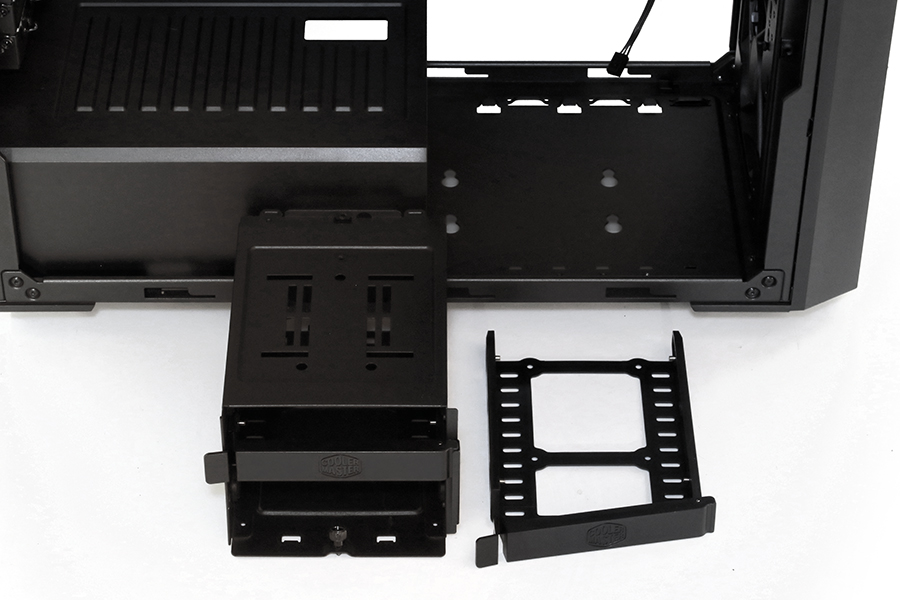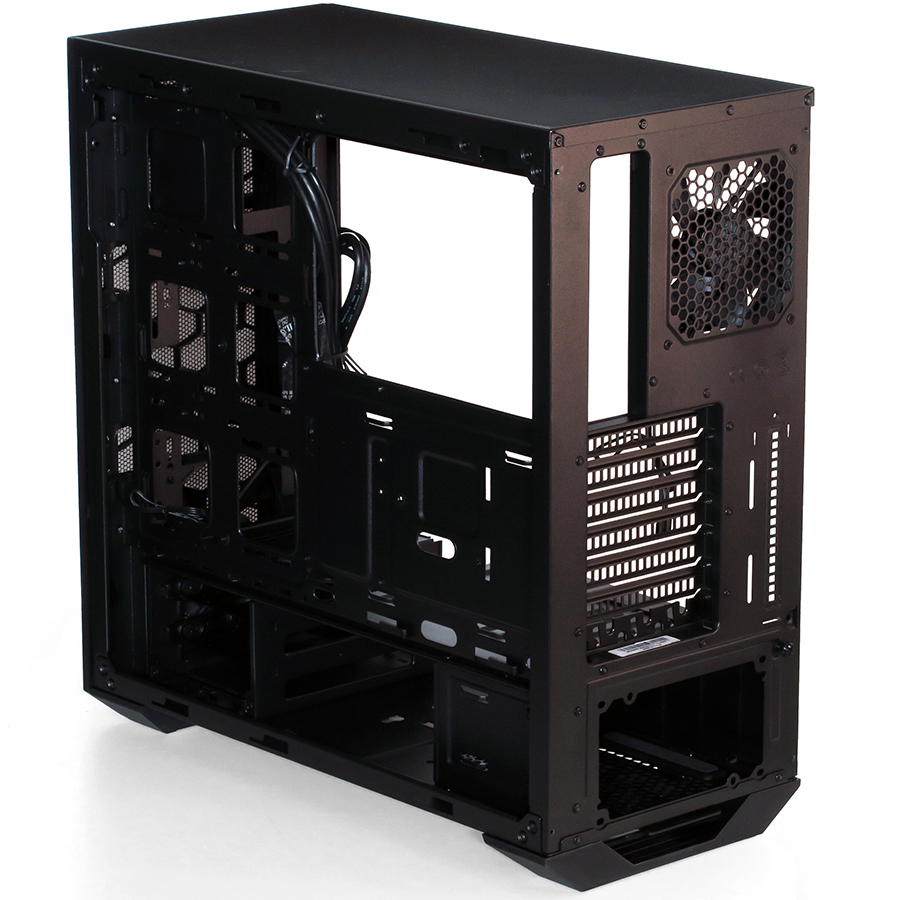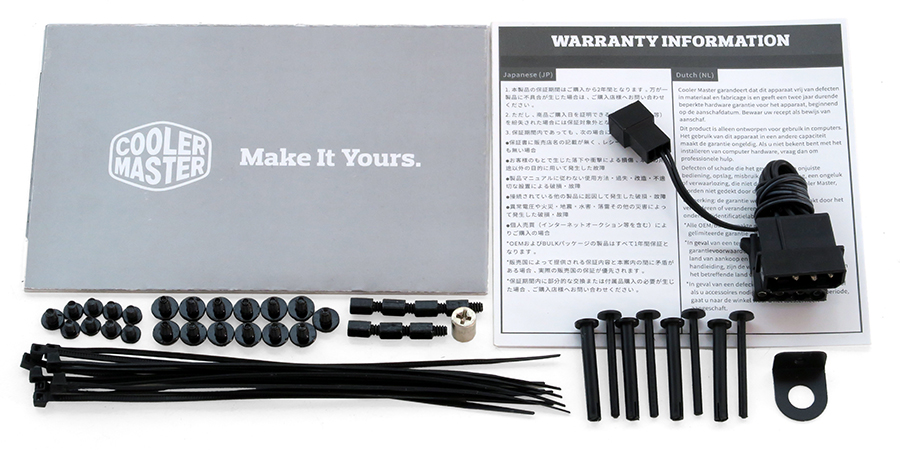Early Verdict
The MasterBox 5 from Cooler Master provides the best performance value we’ve seen in over a year.
Pros
- +
Low cost
- +
Good cooling performance
- +
Good acoustic performance
- +
Room for oversized motherboards
Cons
- -
Few feature enhancements
- -
Few drive bays
- -
Lacks an eighth expansion slot
Why you can trust Tom's Hardware
External And Internal Features
For enthusiasts, the lower limit of acceptable case performance and quality used to come at around $80. There were certainly a few exceptions, such as a certain competitor's venerable model 300, but even that name was tarnished when the company released a substandard replacement; spending any more time in that discussion would distract from the subject of today’s review: Cooler Master’s MasterBox 5.
I’m going to let you in on a little secret that’s gotten me through several System Builder Marathon builds using cases I haven’t reviewed: A trained eye can see how well a case’s ventilation should work, and the lowest class of mid-quality mid-towers usually weighs 16 to 18 pounds. The MasterBox 5 uses steel and plastic thicknesses common among those $80 to $100 “gaming” cases, weighs 16.1 pounds, and the windowed version costs around $70. The photo, weight, and price show how Cooler Master nailed down the basic specs on this one, but what about the finer details?
Cheap cases don’t come with many front-panel ports, but Cooler Master was at least modern enough to include USB 3.0 even if the ports aren’t color coded that way (they’re not blue). The reset button is tiny to avoid confusion with the power button, which has an LED-lit power logo.
The back reveals seven expansion slots behind the motherboard, and a knock out for installing a break-out plate to the side (screw tab not included). Not immediately apparent is the lack of bars between expansion slots, which eases the installation of dual-slot and triple-slot graphics cards while somewhat weakening the back panel. The bottom slot cover is designed to hold cables.
A small dust filter that covers the power supply air inlet slides out from underneath the rear edge of the MasterBox 5’s bottom panel.
Front air filtration is a little trickier to access, since it’s attached to the back side of the front panel frame. You must first remove both side panels, since the frame and filter use flat catch tabs (barbs), which you must manually release from behind.
Cooler Master cites support for two 120mm or 140mm front fans, but the opening is large enough for a three-by-120mm radiator up to 420mm tall (including end caps, fill ports, and line fittings). There are even extra holes for the bottom screws of the third fan on top, so we added it to the chart (next page). The company similarly claims a single 2.5” tray, but that tray actually supports two drives.
Get Tom's Hardware's best news and in-depth reviews, straight to your inbox.
The 3.5” trays also support 2.5” drives, but the 3.5” units benefit from silicon-damped locator pins. This is a balanced solution for users of solid-state 2.5” and mechanical 3.5” drives.
The lower cage can be re-positioned to provide extra radiator clearance, and the upper (2.5”) tray can be re-positioned to make room for up to two 5.25” external drives. Brackets for external drives must be purchased separately, along with a shorter mesh panel to reveal the opening, and the conversion leaves room for only two-by-120mm radiators (or 2x 140mm units with short end caps).
The MasterBox 5 has nearly 1.2” of space behind the motherboard tray for cables. A single screw releases the slide-out power supply cover to allow power supply installation from the opposite side.
With two specially designed self-centering standoffs installed at the factory, the MasterBox 5 installation kit includes the other seven standoffs needed to install an ATX motherboard, along with a pack of cable ties, several M3 and 6-32 mounting screws, fan mounting pins, a fan power adapter cable, and a bracket to use with your cable or lock.
Though EATX might appear a strange specification for a mid-tower, Cooler Master gets there by leaving drive bays out of the motherboard section and, almost ingeniously, not adding a step-in section at the front of the tray. The firm does not provide the extra standoffs for a 13” EATX board, but instead targets buyers of 10.6” to 10.7” oversized ATX boards that are often mislabeled as EATX for lack of a more-accurate form factor designation. Extra standoffs can be purchased by those few buyers who actually have a real EATX board, since that option is a requirement for the MasterBox 5 to carry the EATX label.
MORE: Best Cases
MORE: Cases in the News
MORE: All Case Content
MORE: Cases in the Forums
-
Crashman Reply
You can always put a triple-fan radiator in front. And, it will perform better when placed there.18266913 said:Ouch, No top? No space for radiators :S -
mac_angel after my case literally catching on fire, and their customer service afterwards, I'll never buy another CoolerMaster product again.Reply -
lhowe005 This suffers the same problem as all the other cooler master cases.. the stupid mesh front panels that clog full of dust and look ugly. Fan filters should be behind the front fascia so you cant actually see the dust they collect when looking at the case. Cooler master cases will forever have white circles of dust in front of each fan unless you clean them religiously.Reply -
mac_angel we can't reply or quote others on here any more?Reply
I'm a retired IT technician from IBM. Been building computers for years now. I got a CM HAF case, and an EVGA motherboard. I plugged in the front panel audio from the case into the board. They are all pretty standard and it's impossible to plug in something to the wrong part of the motherboard because of the pin layout. Ran fine for a couple of weeks, then watching TV, we smelled smoke. Opened up the case, and the wire for the front panel audio jack had melted and caught on fire. Not a seriously big fire, I just put it out with my hands. But, imagine if I wasn't home. I complained to CM, and they told me that I must have plugged it into the wrong port on the motherboard. Even if it was plugged into a wrong port (which is physically impossible without bending or cutting pins), the motherboard shouldn't be able to put out a current to melt wires on their own. I paid to ship the case and motherboard to CM, from Canada to California, just for them to say, "nope, not our problem".
My saving grace was that EVGA has AMAZING customer service, and was right down the street from CoolerMaster. They picked up the case and motherboard. The agreed that there was no way it could have been the motherboard creating current from any port (btw, there were scorch marks on the audio jack, so it was plugged into the right one). They tested it, and the wire. They believed it was the case as well, but they replaced both for me, no charge.
EVGA fan. CoolerMaster hater. -
RedJaron Reply
Yes, we can, as this reply should prove. I recommend using the "Comment from the Forums" link as that gives some better control of your posts and formatting.18273618 said:we can't reply or quote others on here any more?
-
anbello262 I can't quote either, even though I'm writing from the forum. In on a mobile phone, but using the desktop version (or at least, the related setting).Reply
That's quite a story, luckily I have never had the need to deal with customer service, but I'll keep that in mind. I always heard EVGA had good.customer service, but it's nice to read a first hand experience.
(Although, with cases I only like NZXT Phantom line, and now Noctis. Their design is incredibly attractive to my eyes. And since cases tend to last many years, I don't see a problem with paying a $50 premium for something I will still enjoy looking at in 3-5 years or more, instead of something I'll want to change in 2 years)

